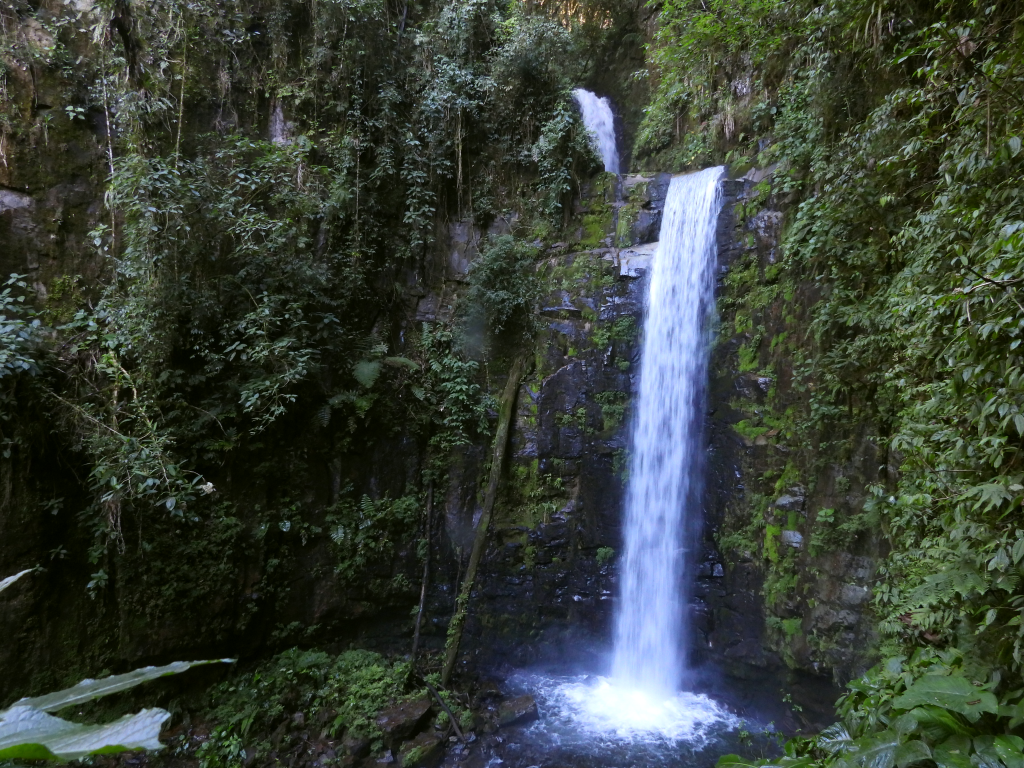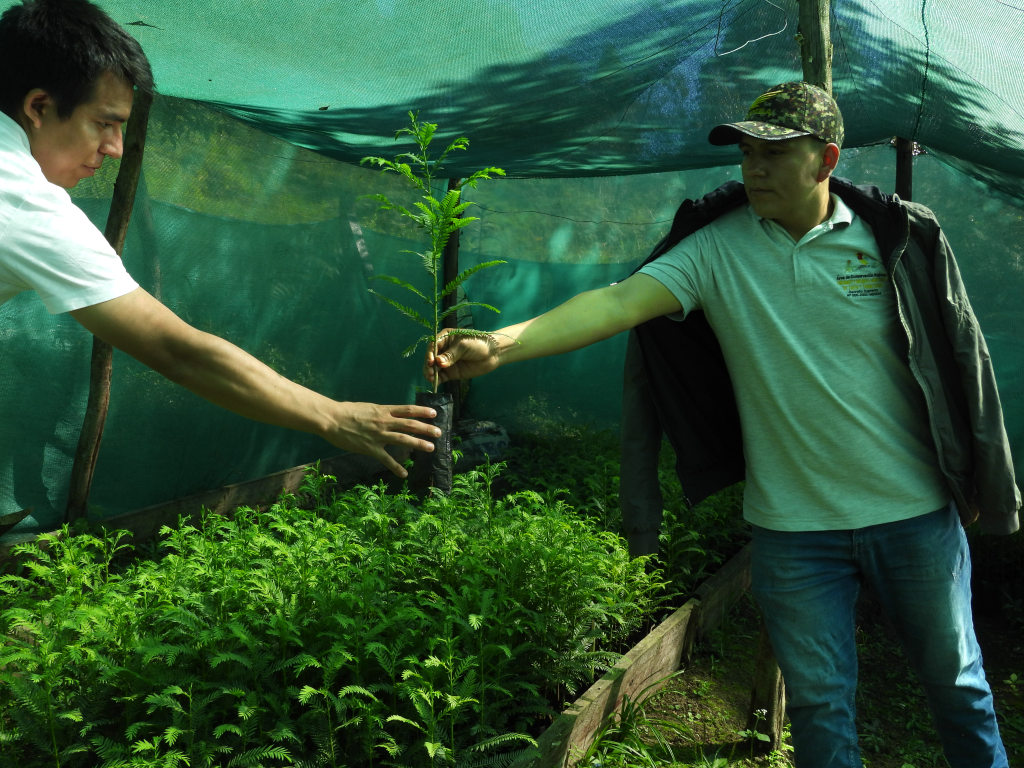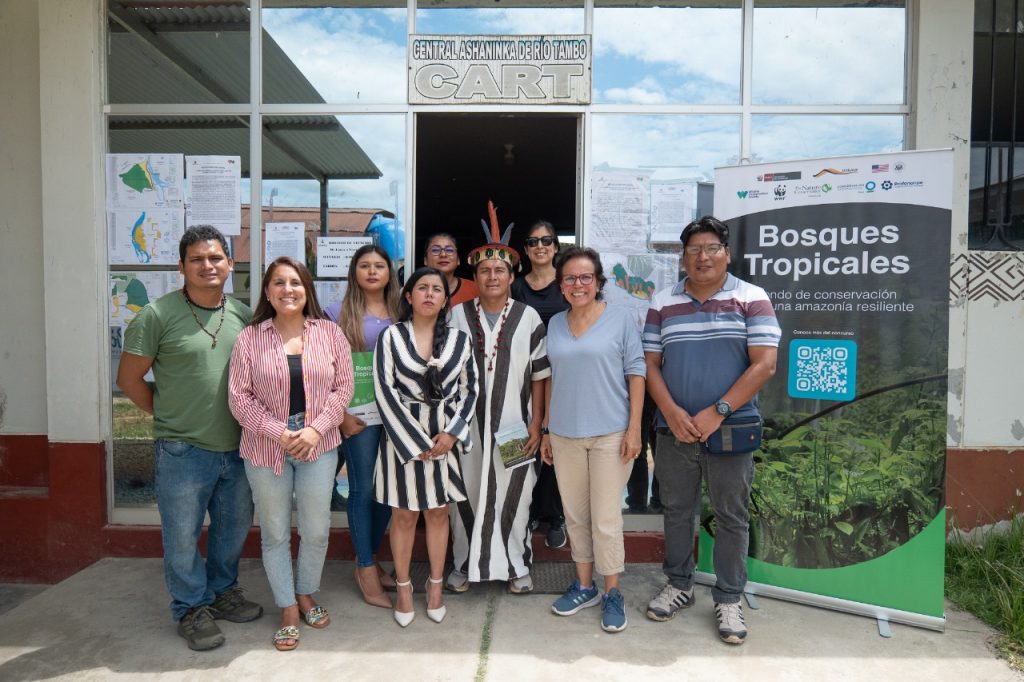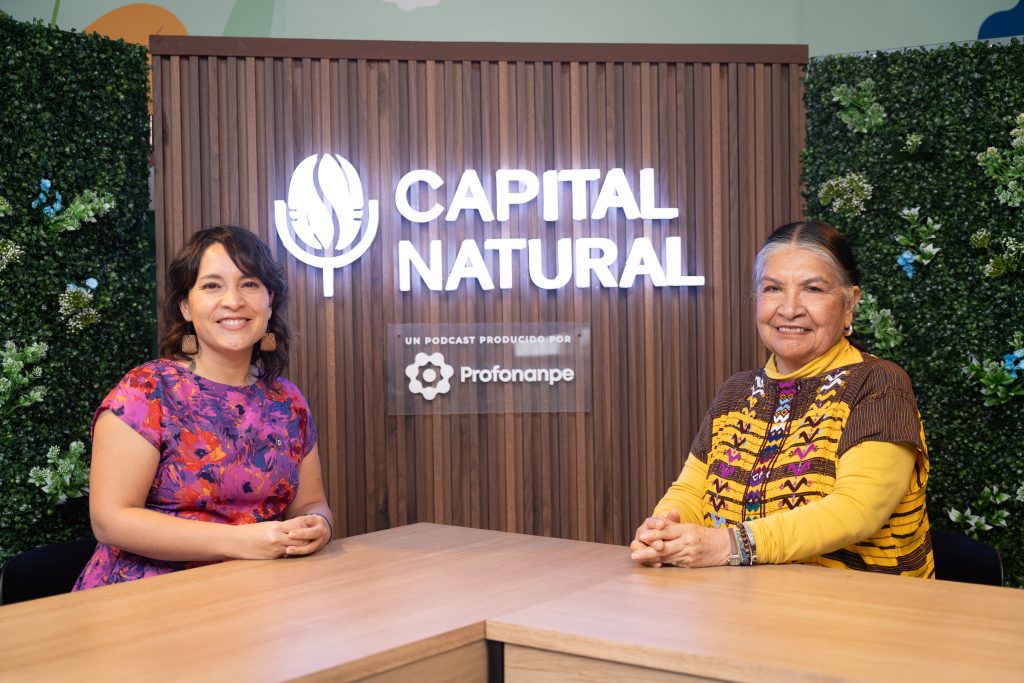Joel Guerrero Burga, a native of the village of Agua Azul Chontalí and inhabitant of San José del Alto in the province of Jaén (Cajamarca), knows better than anyone the diversity and uniqueness of the montane forests. There, where biodiversity coexists with the constant threat of deforestation and migratory agriculture, he decided to forge his path: to study Forestry and Environmental Engineering with the conviction of contributing to the care of his territory through knowledge and community action.
His vocation was born in the field, first as a volunteer park ranger in the Regional Conservation Area Páramos y Montane Forests of Jaén and Tabaconas, a job he did for 2 years. In 2024, he became a control and surveillance monitor for 3 months and today he is a volunteer park ranger in the same RCA. His work is not limited to hiking trails. Between patrolling and installing camera traps, he also promotes the implementation of agroforestry systems with native species such as romerillos (Podocarpus sp.), rehabilitating ecosystems that serve as refuge for birds and wildlife. A silent but essential task to ensure that the forests continue to breathe.
Today, their knowledge, effort and commitment are added to the proposal for the establishment of the Huamantanga and Chorro Blanco Montane Forests Regional Conservation Area as a key actor for community and strategic articulation: “Protecting what is left is essential. It is not just a matter of extracting from nature, but of learning to live with it,” he says.
People are the main allies of conservation.
In districts such as San José del Alto, coffee is the main livelihood for thousands of families. However, the expansion of plots of land to higher elevations (around 2,000 meters above sea level) generates tensions with nature. Faced with this challenge, the proposal of the Huamantanga and Chorro Blanco Montane Forests Regional Conservation Area seeks to articulate communities, associations, municipalities, academia and authorities, with special emphasis on the participation of women, to promote sustainable productive alternatives.
The commitment is clear: without solid governance there can be no conservation. For this reason, the project works to build trust, commitment and capacity in leadership, hemispheric conservation, gender and inclusion. Likewise, for Joel, who has been planting trees since he was a child and learned to recognize the richness of his environment, this effort is also a process of constant dialogue with his fellow countrymen. Through workshops with children and young people, he has become a spokesman for the benefits of protecting the forests.
The challenge of living with nature
The threats to biodiversity are evident: between 2001 and 2023, more than 24,000 hectares of forest were lost in the region, that is, about 1,000 hectares every year. In addition, there has been an increase in and poor prevention of forest fires due to poor institutional coordination and traditional practices such as burning vegetation to attract rainfall, which causes fires and fragments ecosystems.
This context places the Huamantanga and Chorro Blanco montane forests in a vulnerable state, which are home to endangered species such as the Bearded Guan (Penelope barbata), the “Seven-colored” or “Blue-breasted Toucan” (Andigena hypoglauca) and the Peruvian Tororoi (Grallaricula peruviana), bioindicators that reveal the health of the ecosystem. In addition, these leafy green bodies regulate temperature, store carbon and are headwaters of the Chinchipe, Alto Marañón and Chamaya rivers,
As proof of life, in Puerta del Eden, the hamlet where Joel lives, there is the waterfall “The Wonder of Eden”, discovered just a decade ago. This space not only feeds the rivers of the region, but also shelters birds and wild flora. For Joel, it is a living reminder of how waterfalls, forests and watersheds sustain life in balance with communities.

“The Wonder of Eden” Waterfall. Photo: Ángela Montero»
Since 2021, actions have been promoted at different levels to establish the Huamantanga and Chorro Blanco Mountain Forest Regional Conservation Area, led by the Regional Government of Cajamarca with the participation of local communities, municipalities, academia, SERNANP, and technical support from Nature and Culture International. Currently in its fourth stage of establishment, the project is gaining new momentum thanks to the support of the second edition of Conserva Aves, funded by the Government of Canada.
Joel is a key player in this process: a citizen, professional, and leader who connects local commitment with regional and international efforts. “There is always a benefit to protecting: we mitigate climate change and ensure water and life for future generations,” he emphasizes.
The Conserva Aves Initiative is led by American Bird Conservancy (ABC), National Audubon Society (Audubon), Bird Life International, Birds Canada, and the Latin American and Caribbean Environmental Funds Network (RedLAC). The national partners are Profonanpe and ECOAN, leaders in the implementation in Peru, with funding from the Government of Canada.












